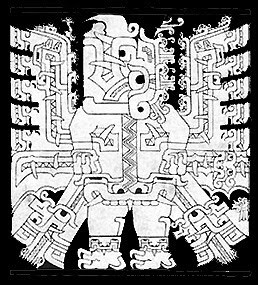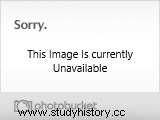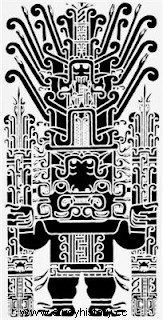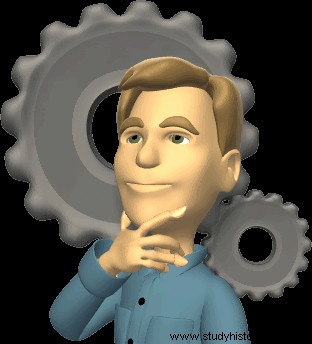 Although it might seem idle, as this has already been pointed out by many authors, we believe it is useful to remind the reader that the The term Chavín has had and has many meanings. Some are valid and others have fallen into disuse. Thus, it is often said simply Chavín to refer to the homonymous site of Chavín de Huantar, but at the same time the term can mean the artistic style, and this can be linked in some way with the concept of Horizon. This has led to much confusion and has not been well understood. Thus, it can have artistic value and mean the diffusion of a style from its center of origin to the periphery, and in this case its dispersion is subject to many factors that cause the style to change. It is a working instrument that allows establishing a sequence, a relative chronology. But there is another conception of Horizon, proposed by John H. Rowe, which tries to determine time through style in order to study the events of the past in their original chronological order and see the cultural processes that constitute these events, assigning them dates in years. with the help of the radiocarbon method.
Although it might seem idle, as this has already been pointed out by many authors, we believe it is useful to remind the reader that the The term Chavín has had and has many meanings. Some are valid and others have fallen into disuse. Thus, it is often said simply Chavín to refer to the homonymous site of Chavín de Huantar, but at the same time the term can mean the artistic style, and this can be linked in some way with the concept of Horizon. This has led to much confusion and has not been well understood. Thus, it can have artistic value and mean the diffusion of a style from its center of origin to the periphery, and in this case its dispersion is subject to many factors that cause the style to change. It is a working instrument that allows establishing a sequence, a relative chronology. But there is another conception of Horizon, proposed by John H. Rowe, which tries to determine time through style in order to study the events of the past in their original chronological order and see the cultural processes that constitute these events, assigning them dates in years. with the help of the radiocarbon method.But when we say Chavín we can also think of something broader and more complex, that is, the culture in toto that encompasses the man of the time and his works in the broader sense of the word. And this involves what has been called the Chavín civilization. But for Tello and his followers, as we will see shortly, the term Chavín has had a very particular connotation, with a strong theoretical ingredient. It has meant the basic culture, practically the focus of diffusion of the Central-Andean high culture. However, when we say Chavín, we often think of the religious ideology that was developed and spread in the Andean Area at a certain time. And finally, with the word Chavín, they wanted to give their own name to an imperial phenomenon that never existed. This conception must be definitively banished.
 Although the monumentality of Chavín de Huántar drew attention from the time of the European conquest, it is only from from the introduction of scientific archeology with the presence of Max Uhle in Peru, when the concern to unravel the origins of the phenomenon began. Here we will try to expose the facts in the light of current evidence, but it is important to have a historical view of the different interpretations, so that the reader can realize not only how ideas have been changing based on the discoveries that were being made , but also how some archaeologists knew how to intuit facts that came to be verified only after his death. This is essential to have a perspective of the matter and to understand, as Kurt Baldinger once stated, that apparently safe knowledge is relativized, that is, it becomes dependent on certain conditions, but in this way truth is also relativized. . There is no "truth" but "truths" and when conditions change, truths also vary (...)
Although the monumentality of Chavín de Huántar drew attention from the time of the European conquest, it is only from from the introduction of scientific archeology with the presence of Max Uhle in Peru, when the concern to unravel the origins of the phenomenon began. Here we will try to expose the facts in the light of current evidence, but it is important to have a historical view of the different interpretations, so that the reader can realize not only how ideas have been changing based on the discoveries that were being made , but also how some archaeologists knew how to intuit facts that came to be verified only after his death. This is essential to have a perspective of the matter and to understand, as Kurt Baldinger once stated, that apparently safe knowledge is relativized, that is, it becomes dependent on certain conditions, but in this way truth is also relativized. . There is no "truth" but "truths" and when conditions change, truths also vary (...) (...) Much has been said about Chavín de Huántar, practically since the Conquest, and references have It had always been at the time just described, but no one bothered to find out whether or not there was a population in its vicinity at the time it was in use. The interest was always focused on the ruins of the great complex. Thus, Bennet, who excavated there in 1938, found that the ruins were the remains of a ceremonial center used only for periods, and that during the rest of the year a very small population remained there. It was Marino Gonzales who, based on evidence, suggested to John Rowe, that under the current town of Chavín there were remains of a large population, which could be contemporary with time. The investigations carried out by Richard Burger in recent years have confirmed these facts and allow us to establish a much clearer chronology, not only of the Chavín de Huantar area, but of the entire period related to this phenomenon. Burger has excavated in the same town of Chavín and has been able to relate his data to those of the temple, establishing a sequence of three epochs that he has baptized with local names and that have been dated by the radiocarbon method.From:Peru Man and History Duccio Bonavia
(...) Much has been said about Chavín de Huántar, practically since the Conquest, and references have It had always been at the time just described, but no one bothered to find out whether or not there was a population in its vicinity at the time it was in use. The interest was always focused on the ruins of the great complex. Thus, Bennet, who excavated there in 1938, found that the ruins were the remains of a ceremonial center used only for periods, and that during the rest of the year a very small population remained there. It was Marino Gonzales who, based on evidence, suggested to John Rowe, that under the current town of Chavín there were remains of a large population, which could be contemporary with time. The investigations carried out by Richard Burger in recent years have confirmed these facts and allow us to establish a much clearer chronology, not only of the Chavín de Huantar area, but of the entire period related to this phenomenon. Burger has excavated in the same town of Chavín and has been able to relate his data to those of the temple, establishing a sequence of three epochs that he has baptized with local names and that have been dated by the radiocarbon method.From:Peru Man and History Duccio Bonavia 
